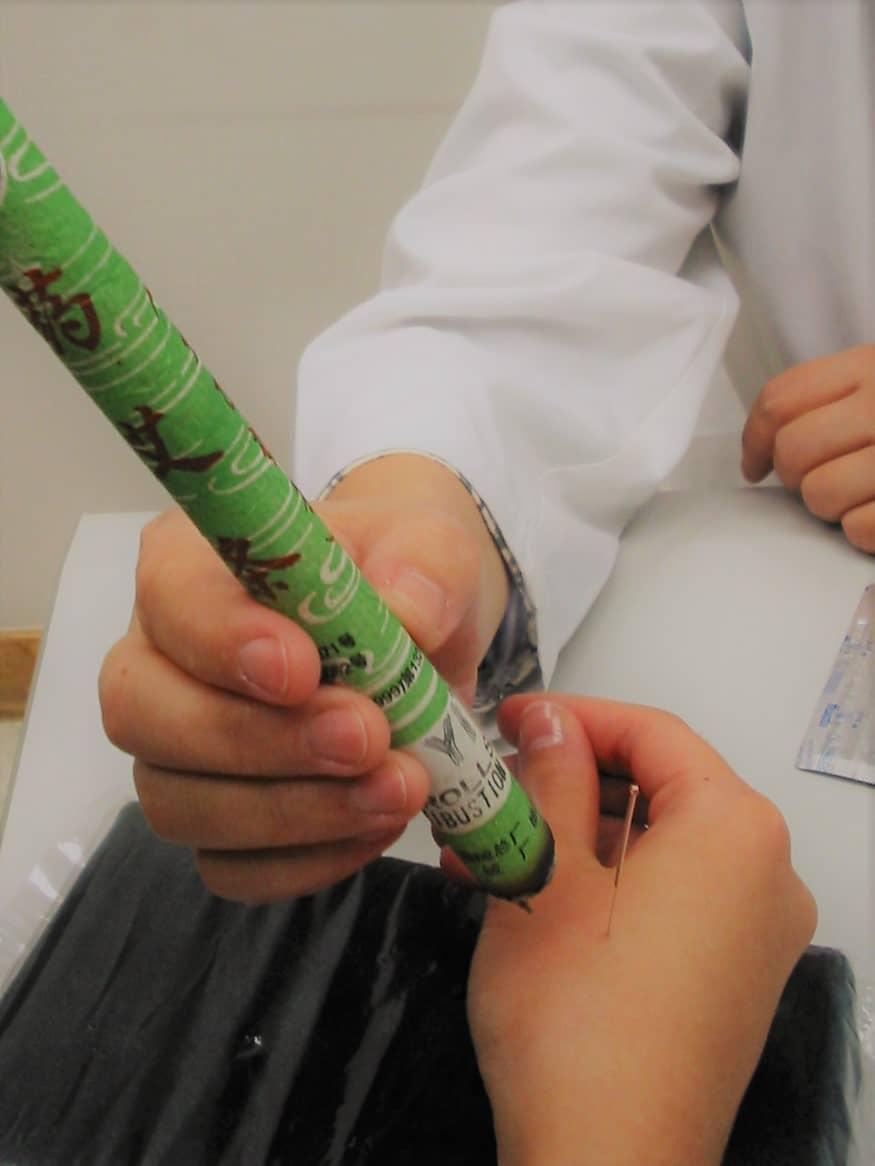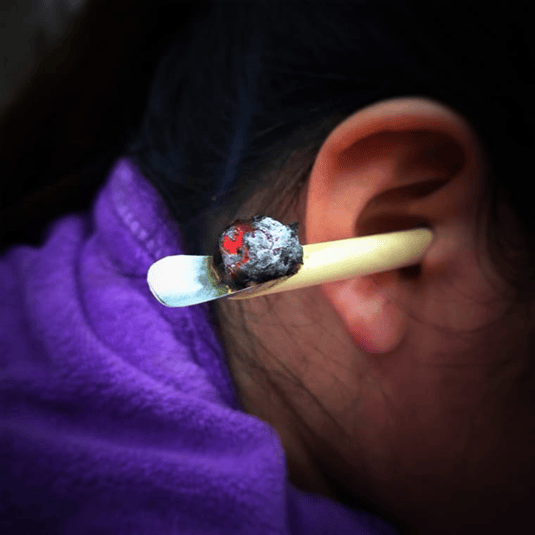Moxibustion is an ancient therapy that involves burning mugwort leaves to apply heat to specific acupuncture points. This thermal therapy is used to prevent and treat diseases by utilizing its warming stimulation.

The benefits of this heat therapy include warming the meridians, promoting blood circulation, dispelling cold and dampness, reducing swelling, and enhancing physical fitness. For ear ringing, the warming effect from moxibustion travels along the ear canal to the eardrum and inner ear cavity, improving ear pain and blockage sensations.
There are various methods of moxibustion, mild moxibustion, medicinal moxibustion, and salt-separated moxibustion are used for treating ear ringing.
(I) Herbal-separated Moxibustion
Preparation: acorus (15g), turmeric root-tuber (15g), pinellia tuber (15g), borneol (10g) and fresh ginger juice (15ml). Crush the herbs and mix with the fresh ginger juice; form the mixture into medicinal cakes with a diameter of about 4 cm and a thickness of 0.5 cm; prepare some moxa cones for burning.
Method: place the medicinal cakes on acupoints like ting gong (Si19), ting hui (Gb2), wan gu (Gb12) and tian zhu (Bl10), then put a moxa cone on each point, light the moxa cones and let them burn slowly.
Burn each point for 5-7 moxa cones, perform the procedure every two days, and complete 10 sessions as one treatment course. The herbs help unblock the ear orifices, promote the circulation around the ears.
(II) Tubule Moxibustion
This is an ancient therapy that uses a small reed tube filled with moxa wool, which is then fixed in the outer ear canal and ignited for moxibustion. This device-based moxibustion method allows the heat and medicinal properties of mugwort to reach the affected area directly through the tube. It not only acts on the area around the ear but also conducts into the ear, improving ear circulation, promoting tissue repair, and alleviating hearing symptoms.

This therapy is commonly used for diseases of the head and facial organs, such as facial paralysis, stroke, headache, dizziness, tinnitus, hearing loss, and dementia. It is particularly suitable for tinnitus caused by heart qi deficiency or heart blood stasis.
Preparation: prepare chrysanthemum (5g) and bupleurum root (10g), and boil with 150ml of water for 10 minutes, turn off the heat, put in some reed tubes and soak for 2 hours; take out the reed tubes and fill with moxa wool for use.
Method: let the patient sit upright, insert the device into the ear canal to a depth of about 2 cm and secure it with cotton balls around the tube; ignite it for moxibustion, there should be a warm feeling in the ear region. Perform moxibustion for 5-9 moxa cones.
Do this once daily, with 10 sessions making up one treatment course. Rest for two days before starting another course.
(III) Navel Moxibustion
Navel moxibustion is a traditional therapy that involves applying moxa to the navel area. This method is believed to warm the body's meridians, enhance qi and blood circulation, and improve overall health.
The navel, known as the shen que (CV8), is a crucial acupoint on the
Conception Vessel Meridian. It is considered the root of life and a key hub for the body's internal and external body communication, as well as qi and blood circulation. This acupoint is often used in moxibustion, topical applications, or acupoint irradiation therapy. TCM claims that navel moxibustion can warm and supplement the
body constitution and consolidate the overall body resistance. Navel therapy is commonly used to treat abdominal problems.
For tinnitus patients, the procedure for navel moxibustion is as follows:
Fill the navel with some ground halite, then covered by a slide of fresh ginger; prepare some moxa cones for burning, put a moxa cone on the ginger, ignite and let it burn slowly. There should be a warm feeling in the region; burn 3 to 5 cones each time. Do this daily, ten sessions as one course of treatment.

Different ways of navel moxibustion





